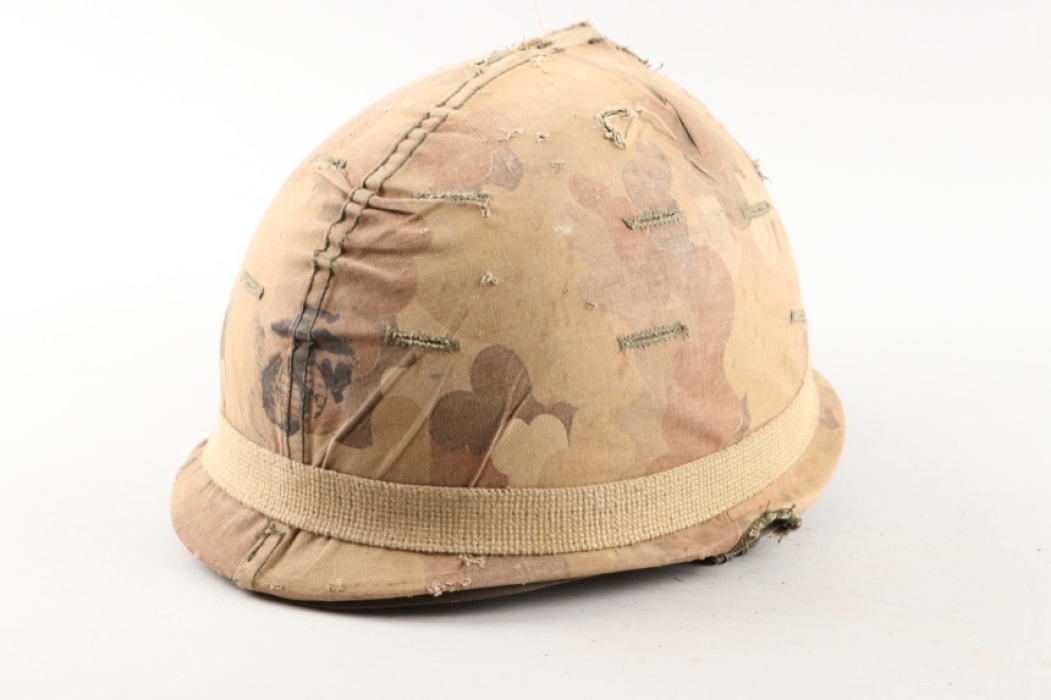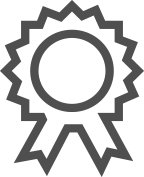2nd USA auction
Die Auktion mit 1036 Losen endete am 22. October 2022. 74% aller Lose wurden verkauft

US M1 Helmet with Marine Corps Camouflage Cover
Möchten Sie ein ähnliches Stück verkaufen? Wir beraten Sie auch gerne telefonisch: 08541 9053699
-
Bezahlung
-
WIE KANN ICH FÜR MEINE BESTELLUNG BEZAHLEN?
AUKTIONAlle erfolgreichen Gebote werden automatisch zu einer einzigen Bestellung zusammengefasst. Für diese können Sie uns nach Auktionsende in Ihrem persönlichen Kundenkonto Ihre bevorzugte Bezahl- und Versandart oder eine alternative Lieferadresse mitteilen.
Wenn wir diese freiwilligen Angaben nicht von Ihnen erhalten melden wir uns automatisch im Laufe des Montags nach Auktionsende mit einer Zahlungsanweisung per Email. Basierend auf Erfahrungswerten schlagen wir Ihnen die bequemste Bezahlmehtode und die günstigste Versandart vor. Sie möchten Ihre Bezahl- und Versandart ändern oder eine alternative Lieferadresse angeben? Kein Problem! Besuchen Sie Kundenkonto/BESTELLUNGEN oder kontaktieren Sie uns per Email.
BESTELLUNGEN IM ONLINESHOPWählen Sie während der Bestellung Ihre bevorzugte Bezahl- und Versandart und schicken Sie diese ab. Sie erhalten Ihre Zahlungsanweisung spätestens am darauffolgenden Tag per Email. Die Zahlungsfrist beträgt sieben Tage. Sie planen eine Bestellung per Ratenzahlung zu begleichen? Bitte sprechen Sie uns gerne vor Ihrer Bestellung darauf an.
Für mehr Informationen zu Bezahlung und Versand, besuchen Sie unsere Häufigen Fragen.
WIR AKZEPTIEREN FOLGENDE BEZAHLARTEN
-
-
Versand
-
IHRE BESTELLUNG IN DEN BESTEN HÄNDEN
VERPACKUNG & SENDUNGSVERFOLGUNGNach Zahlungseingang versenden wir Ihre Bestellung für gewöhnlich am darauffolgenden Werktag. Wir bestätigen den Eingang Ihrer Zahlung per Email und informieren Sie zur Versandvorbereitung. Nach Abholung der Sendung durch unsere Versanddienstleister teilen wir Ihnen die Sendungsnummer per Email mit. Den Status Ihrer Sendung können Sie auch jederzeit unter Kundenkonto/BESTELLUNGEN einsehen. Ihre Rechnung geht Ihnen automatisch am Tag des Versands zu.
VERSAND ZU EINER ALTERNATIVEN ADRESSEBevorzugen Sie für eine Bestellung einen Versand zu Ihrer Arbeitsstelle? Sie sind im Urlaub und wünschen den Versand zu einer Packstation oder einem Freund? Kein Problem! Diese Änderungen können Sie jederzeit unter Kundenkonto/BESTELLUNGEN vornehmen. Alternativ können Sie natürlich jederzeit auch per Email informieren.
UNSERE PARTNER FÜR DEN VERSAND
-
-
Garantie
-
 GARANTIE!
GARANTIE!Alle angebotenen Artikel werden von unseren Experten akribisch auf deren Echtheit geprüft und detailiert beschrieben. Wir bieten ausschließen zeitgenössiche Originale an. Etwa 15% aller Kundeneinlieferungen ensprechen unseren Anforderungen nicht und werden retourniert.
Gekauft wie gesehen? Nicht bei uns. Im Gegensatz zu traditionellen Auktionshäusern bieten wir volles Rückgaberecht of Originalität an. Sollten Sie mit Ihrer Bestellung nicht zufrieden sein, können Sie die Bestellung innerhalb 14 Tagen widerrufen. Bitte kontaktieren Sie uns vor dem Rückversand. Für mehr Einzelheiten besuchen Sie bitte unsere häufigen Fragen.
In eigener Sache: Bieten Sie nur auf Lose, die Sie auch erwerben möchten. Bitte vermeiden Sie Gebote nach Auktionende zu stornieren. Sollten Sie ein fehlerhaftes Gebot abgegeben haben, informieren Sie uns bitte umgehend. Wir löschen Ihre Gebote gerne bis 24 Stunden vor Ende der Auktion.
-
Land Bundesrepublik Deutschland
Maße
Gewicht
 US Los 62-0620
US Los 62-0620EAN 3000000006412
 US Los 62-0620
US Los 62-0620Epoche 1945 — Gegenwart
Land Bundesrepublik Deutschland
Material
Maße
Hersteller
Gewicht
Land Bundesrepublik Deutschland
 US Los 62-0620
US Los 62-0620Maße
EAN 3000000006412
Hersteller
Gewicht
Bundesrepublik Deutschland
US M1 Helmet with Marine Corps Camouflage Cover
Beschreibung
M1 Infantry Helmet with marine corps camouflage cover. One strap missing. Soldier wrote his name in rear strap: Bob Gay.
The M1 is a combination of two "one-size-fits-all" helmets—an outer metal shell, sometimes called the "steel pot", and a hard hat–type liner nestled inside it featuring an adjustable suspension system. Helmet covers and netting would be applied by covering the steel shell with the extra material tucked inside the shell and secured by inserting the liner.
The outer shell should not be worn by itself. The liner can be worn by itself, providing protection similar to a hard hat, and was often worn in such fashion by military policemen, Assistant Drill Instructors, and rifle/machine gun/pistol range staff, although they were supposed to wear steel at the range. The liner is sometimes worn in U.S. military ceremonies and parades, painted white or chromed. The depth of the helmet is 7 inches (180 mm), the width is 9.5 inches (240 mm), and length is 11 inches (280 mm), the steel shell thickness is 0.044" (1.12 mm), The weight of a World War II–era M1 is approximately 3 pounds (1.4 kg), including the liner and chinstrap.
The liner is a hard hat-like support for the suspension, and is designed to fit snugly inside the steel shell.
The first liners were produced in June 1941 and designed by Hawley Products Company. The suspension was initially made from strips of silver rayon webbing stretched around and across the inside of the liner. A sweatband is clipped onto these, and is adjusted to fit around the head of the wearer. Three triangular bands of rayon meet at the top of the helmet, where they were adjusted by a shoestring to fit the height and shape of the wearer's head. A snap-on nape strap cushioned the liner against the back of the wearer's neck and stops it from falling off. As the rayon had a tendency to stretch and not recover its shape, the suspension material was later changed to olive drab number 3, and then olive drab number 7, herringbone twill cotton webbing.
World War II and Korean War-era liners have their own chinstrap made from brown leather. The liner chinstrap does not have loops like the shell; it was either riveted directly to the inside of the liner (early examples) or snapped onto studs. It can still swivel inside the liner. The chinstrap is usually seen looped over the brim of the shell, and helps to keep it in place when its own chinstraps are not in use.
Early liners were made from a mix of compressed paper fibers impregnated with phenolic resin, with olive drab cotton twill fabric stretched over the outside. They were discontinued in November 1942 because they degraded quickly in high heat and high humidity environments. They were replaced by evolving plastic liners, using a process developed by the Inland Division of General Motors. These liners were made of strips of cotton cloth bathed in phenolic resin and draped in a star shape over a liner-shaped mold, where they were subjected to pressure to form a liner. The initial "low pressure" process was deemed unacceptable by the Army, but accepted out of need. These liners were made by St. Clair Manufacturing and Hood Rubber Company. Hawley, Hood, and St. Clair's contracts were cancelled by early 1944, when a "high pressure" process which produced better-quality liners became commercially viable. Companies which produced "high pressure" liners during World War II included Westinghouse Electric & Manufacturing Company, Firestone Tire and Rubber Company, CAPAC Manufacturing, Inland (whose molds were acquired by Firestone after their contract was cancelled), Mine Safety Appliances Company, Seaman Paper Company, and International Molded Plastics, Inc.
Liners essentially identical in construction to "high pressure" World War II examples were produced between 1951 and 1954 during the Korean War by the Micarta Division of Westinghouse and CAPAC Manufacturing. In the 1960s, the M1 helmet liner was redesigned, eliminating the leather chinstrap, nape strap, and changing the suspension webbing to a pattern resembling an asterisk in a coarse cotton web material in lieu of the earlier cotton herringbone twill. In the early 1970s, suspension materials changed to a thicker, more flexible nylon with a rougher unbeveled rim. Later changes included a move to a yellow and green material for liner construction
Zustand
2-
Verkäufer
History Trader Inc., 521 Thorn Street #165, Sewickly, PA 15143-0165, USA

